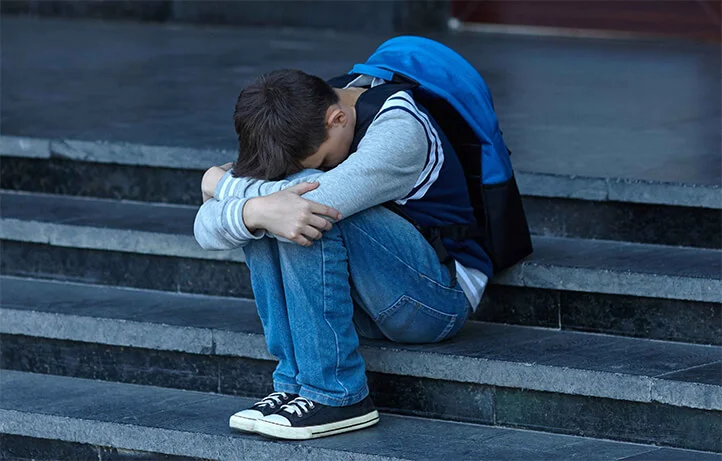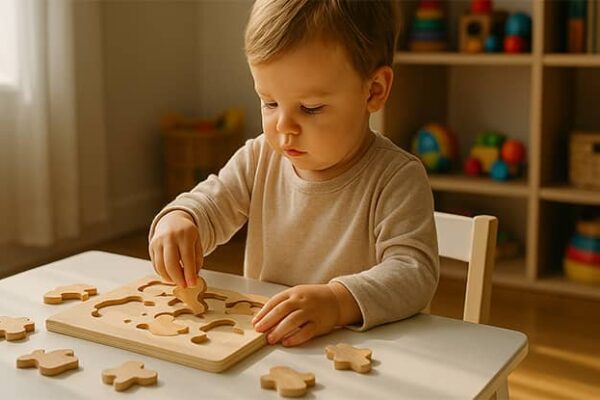The period from 12 to 15 years is one of the most important and challenging stages in a child’s development. It can, without exaggeration, be called a time of great changes, when children experience the transition from childhood to adolescence. During this period, significant physical, cognitive, emotional, and social changes occur, profoundly impacting their lives and personality formation.
Understanding the peculiarities of age-related development in children aged 12-15 is crucial for parents, educators, and anyone who works with adolescents. It helps to better comprehend their needs, behavior, and emotional state, as well as to provide the necessary support and guidance during this complex phase of transitioning into adulthood.

Physical Development in Children Aged 12-15
Physical development is one of the most obvious and noticeable aspects of the transition from childhood to adolescence between the ages of 12 and 15. Significant changes in body composition, growth, and the development of secondary sexual characteristics occur under the influence of hormonal changes associated with puberty. These transformations often cause anxiety and embarrassment among adolescents, as their bodies change rapidly and sometimes unpredictably.
The pace of physical development can vary greatly even among children of the same age and gender. Some adolescents enter puberty earlier than their peers, while others experience delays in their development.
These individual differences can influence self-perception and interaction with others, creating additional challenges and difficulties. Therefore, it is essential to understand the patterns and characteristics of physical development during this age range to better support adolescents on their journey into adulthood.
Hormonal Changes and Development of Secondary Sexual Characteristics
Between the ages of 12 and 15, children enter puberty, which is characterized by significant hormonal changes. An increase in the levels of sex hormones, such as estrogen in girls and testosterone in boys, triggers the process of sexual maturation and the related physical changes.
- Girls typically begin puberty earlier than boys, around the age of 10-11. An increase in estrogen levels leads to the development of breasts, the growth of pubic and underarm hair, changes in body shape (hip widening, rounding of forms), and the onset of the menstrual cycle.
- Boys usually enter puberty between the ages of 11-13. The rise in testosterone levels causes the growth of facial, pubic, and underarm hair, voice changes (deepening), muscle mass increase, and genital growth.
These changes can cause anxiety, embarrassment, or even stress in some adolescents, especially if they occur earlier or later than in their peers.
Growth and Body Composition
During this age, there is rapid growth and changes in body composition. Girls generally begin growing earlier than boys and may surpass their male peers for a time. Boys, in turn, experience a more dramatic growth spurt later, around ages 14-15.
The pace of growth and changes in body composition can differ significantly even among children of the same gender and age. Some adolescents may look much older or younger than their peers, which often affects their self-perception and interaction with others.
Issues Related to Physical Development
Rapid physical changes at this age can cause a number of issues, such as:
- Acne and skin problems. Hormonal changes and increased activity of the sebaceous glands sometimes lead to the appearance of pimples, blackheads, and other skin issues. This can negatively affect adolescents’ self-esteem and social interactions.
- Clumsiness and coordination problems. Rapid growth and changes in body proportions can temporarily cause clumsiness and coordination difficulties.
- Concerns about appearance and body composition. Many adolescents become overly concerned with their appearance and body shape, especially if they differ from the “ideals” imposed by society and the media. This can lead to the development of eating disorders, low self-esteem, or depression.
It is important to remember that these issues are a normal part of development and typically resolve over time. However, in some cases, professional help from a dermatologist or psychologist may be necessary.

Cognitive Development in Children Aged 12-15
In addition to physical changes, significant cognitive development occurs in adolescents aged 12-15. This is the period when they transition from concrete to abstract thinking, developing the ability to analyze, synthesize, and critically assess information. Their cognitive abilities reach a new level of complexity, opening up new opportunities for learning and understanding.
Cognitive development during this age is closely tied to changes in the brain’s structure and functioning. The adolescent brain undergoes significant “reprogramming,” during which the formation of new neural connections and the optimization of existing ones occur. This process provides the foundation for the development of more complex cognitive skills necessary for successful maturation and adaptation to environmental demands.
Development of Abstract Thinking
Between the ages of 12 and 15, adolescents develop abstract thinking, which allows them to analyze and generalize information at a higher level. They begin to think more abstractly and reason about hypothetical situations, ideas, and concepts that go beyond their immediate experience.
This ability for abstract thinking enables them to:
- formulate their own ideas and opinions;
- analyze complex problems from different perspectives;
- understand metaphors, analogies, and symbols;
- consider the future and make long-term plans.
However, it’s important to understand that the development of abstract thinking occurs gradually, and some adolescents may reach this stage earlier or later than their peers.
Ability to Analyze and Synthesize Information
Adolescents at this age become more capable of analyzing and synthesizing information from various sources. They can critically assess facts, identify patterns, draw reasoned conclusions, and formulate their own judgments.
This ability allows them to:
- solve complex tasks and problems;
- develop logical and critical thinking;
- process large volumes of information;
- form their views and beliefs based on the analysis of various sources.
The development of analytical and synthetic abilities is closely tied to adolescents’ academic achievements in school. However, it’s important to remember that each child develops at their own pace, and some may need additional support and encouragement to develop these skills.
Development of Critical Thinking
The development of critical thinking enables adolescents to ask questions, doubt, and challenge authorities. They begin to form their own views and beliefs, which may differ from those of their parents, teachers, or societal norms.
Critical thinking manifests in the ability to:
- identify bias and unfounded claims;
- evaluate the credibility of information sources;
- analyze arguments and find their weaknesses;
- consider alternative viewpoints and perspectives.
Although this tendency toward critical thinking can lead to conflicts with authorities, it is an important skill for adolescents’ future success in education, career, and life.
Development of Interests and Inclinations
At this age, adolescents begin to exhibit more distinct interests and inclinations in certain areas, such as:
- Arts (music, painting, theater);
- Sports (team or individual sports);
- Science and technology (programming, robotics, biology);
- Community activities (volunteering, politics, activism).
The development of these interests and inclinations helps adolescents determine the direction for further development of their abilities, career choice, and future aspirations.
However, it’s important to remember that childhood interests may change over time, and it’s essential to support adolescents in exploring different areas without limiting their choices.

Emotional Development of Children Aged 12-15
Emotional development is one of the most complex and often dramatic areas for children aged 12-15. During this period, sharp hormonal changes occur, which significantly impact adolescents’ emotional state and mood. Mood swings, outbursts of anger, heightened anxiety, and depressive states become common for many of them.
In addition to biological factors, social and psychological aspects also influence the emotional development of teenagers. The formation of self-esteem and identity, relationships with peers and parents, and the growing need for independence and autonomy create additional challenges and stressful situations. All these factors can lead to emotional instability and complicate the maturation process.
Emotional Instability and Mood Swings
Adolescence is often characterized by emotional instability and sharp mood swings. Hormonal changes associated with puberty can amplify emotional reactions and increase sensitivity to stressful situations.
Typical manifestations of emotional instability include:
- frequent mood swings without apparent reason;
- outbursts of anger or irritability;
- increased anxiety and worry;
- periods of depression and apathy;
- impulsive behavior and difficulty managing emotions.
Such emotional fluctuations can be difficult for both the adolescents themselves and their parents and environment. It’s important for adults to show patience, understanding, and support during this time.
Formation of Self-Esteem and Identity
At the age of 12-15, an important process of forming self-esteem and identity takes place. Teenagers begin to reflect on who they are, their place in society, and how others perceive them.
Factors influencing the formation of self-esteem and identity include:
- physical changes and perception of one’s body;
- successes or failures in school, sports, or other activities;
- relationships with peers and social acceptance;
- the influence of social networks and mass media;
- relationships with parents and family dynamics.
This process can lead to periods of self-doubt, low self-esteem, or even identity crises in some adolescents. However, it is also an important stage in developing a mature and healthy personality.
The Impact of Social Relationships on Emotional State
Social relationships play a crucial role in the emotional development of teenagers. Acceptance or rejection by peers, conflicts with parents or teachers can significantly affect their emotional state and self-esteem.
Positive social connections, such as:
- strong friendships;
- family and parental support;
- participation in school or community groups promotes emotional stability, self-confidence and well-being.
On the other hand, negative social interactions, such as:
- bullying or rejection by peers;
- conflicts and arguments with parents;
- isolation and lack of social support can lead to emotional problems, such as anxiety, depression, and low self-esteem.
Coping Strategies for Stress
At this age, teenagers begin to develop their own strategies for coping with stress and emotional difficulties. Some may turn to healthy methods, such as:
- engaging in sports or physical activities;
- pursuing creative hobbies (drawing, music, writing);
- communicating with friends and seeking social support;
- practicing mindfulness and meditation;
- planning and organization.
However, other teenagers may resort to less useful and even harmful methods of coping with stress, such as:
- using alcohol, drugs, or other psychoactive substances;
- overeating or starving;
- avoiding and running away from problems;
- aggressive or self-destructive behavior.
It’s important to teach teenagers healthy strategies for managing stress and emotional difficulties to prevent the development of harmful habits and mental health problems.

Social Development of Children Aged 12-15
Social development plays a central role in the lives of children aged 12-15. During this period, their social world undergoes significant changes as they gradually distance themselves from family and become more focused on peers and friends. Relationships with peers become one of the key factors influencing the formation of identity, self-esteem, and emotional well-being.
The need to belong to a peer group and conform to its norms often prevails over other interests of teenagers. They strive to be part of a circle of friends, share their values, and avoid rejection. This desire can lead to conflicts with parents as teenagers begin to distance themselves from the family and experience a growing need for independence and autonomy.
Peer Influence and the Formation of Friendships
At the age of 12-15, peer influence becomes especially strong. Teenagers seek to belong to a group and form friendships, which play an important role in their social development.
They begin to spend more time with peers and less with family. This is related to the growing need for independence, self-assertion, and finding their identity outside the family circle.
Peer influence can be both positive and negative. On the one hand, friendships promote the development of social skills, support, and a sense of belonging. On the other hand, peers can exert negative influence, encouraging risky or problematic behaviors, such as substance abuse, violence, or illegal actions.
Parents and educators need to closely monitor teenagers’ social environment and encourage healthy friendships that will contribute to their positive development.
Relationships with Parents and Other Authority Figures
Despite the growing influence of peers, relationships with parents and other authority figures, such as teachers or mentors, remain important for teenagers. However, these relationships often become more complex and tense as teenagers strive for greater independence and autonomy.
Typical problems in relationships between 12-15-year-olds and their parents include:
- conflicts over rules, boundaries, and restrictions;
- trust issues and respect for personal space;
- disagreements in values, views, and beliefs;
- the desire for independence and resistance to authority.
It’s important to maintain open communication, establish clear and reasonable boundaries, but at the same time respect the growing autonomy of teenagers. Maintaining warm and supportive relationships will help them successfully navigate this challenging period.
Development of Independence and Autonomy
At this age, teenagers begin to seek greater independence and autonomy from their parents. They want to make their own decisions and choose independently in various aspects of life, such as:
- appearance and clothing style;
- hobbies and interests;
- choice of friends and social circle;
- management of personal time and finances.
This desire for independence is a normal and important part of growing up. However, it can also lead to conflicts with parents, who try to set boundaries and ensure children’s safety.
Parents are advised to gradually expand teenagers’ autonomy, allowing them to make choices and decisions in a safe environment. This will help develop responsibility and independence, necessary for a successful transition into adulthood.
Formation of Values and Moral Principles
Between the ages of 12 and 15, adolescents actively form their values and moral principles. They begin to think about issues such as justice, equality, social responsibility, and form their views and beliefs based on these reflections.
Various factors influence the formation of values and moral principles, such as:
- family upbringing and parental values;
- peer influence and social environment;
- religious or cultural traditions;
- mass media and social movements;
- personal experience and reflections of the teenagers.
This process can lead to conflicts with parents or society if adolescents’ values and beliefs differ from generally accepted norms. However, it is also an important step towards forming a mature and conscious personality.

Challenges and Issues of This Age
The adolescent period from 12 to 15 years is a time of significant changes and challenges that affect both the teenagers themselves and their parents and environment. Numerous physical, cognitive, emotional, and social changes during this time create fertile ground for the emergence of various problems and challenges.
From an increased risk of developing anxiety disorders and depression to the influence of social networks and technology, academic performance issues, and dangerous experiments with psychoactive substances—the list of potential difficulties is quite extensive. It is crucial for parents and educators to recognize the signs of these problems early and respond in a timely manner to prevent their escalation and serious negative consequences.
Risk of Developing Anxiety Disorders and Depression
Adolescence is associated with an increased risk of developing anxiety disorders and depression. Emotional instability, low self-esteem, problems in social relationships, stress, and other factors can contribute to the development of these conditions.
Signs of anxiety disorders and depression in teenagers may include:
- constant feelings of anxiety, worry, or fear;
- loss of interest in usual activities;
- mood swings, irritability, or apathy;
- difficulty concentrating and declining academic performance;
- changes in sleep and appetite patterns;
- feelings of hopelessness or thoughts of suicide.
It is important to recognize these signs and seek professional help if they persist and interfere with the teenager’s normal functioning.
The Influence of Social Networks and Technology
Modern technology and social networks play a significant role in teenagers’ lives. While they are useful for communication, obtaining information, and entertainment, excessive use can lead to several problems.
Some risks associated with the overuse of technology and social networks include:
- addiction and neglect of other activities;
- cyberbullying (online harassment) and negative influence;
- self-esteem issues due to comparison with idealized images;
- disrupted sleep and attention;
- exposure to unwanted or dangerous content.
It is important for parents and educators to monitor teenagers’ use of technology and social networks, set reasonable limits, and teach them safe and responsible behavior in the digital environment.
Academic Performance and Motivation Issues
At this age, some teenagers may experience difficulties with academic performance and motivation. This can be due to various factors, such as:
- distractions (social media, conflicts with parents);
- conflicts with teachers or peers at school;
- low self-esteem and insecurity about their abilities;
- uncertainty about future careers or life goals.
Declining academic performance can lead to additional stress, conflicts with parents, and hinder the successful transition to the next stage of education.
Parents and educators should closely monitor teenagers’ academic performance and motivation, identify the causes of problems, and provide the necessary support. This may include additional lessons, consultations with teachers, help with goal setting, and time management.
Risks Associated with the Use of Psychoactive Substances
Unfortunately, at the age of 12-15, some teenagers may begin experimenting with psychoactive substances, such as alcohol, tobacco, or drugs. This can be due to various reasons:
- curiosity and the desire to experience new sensations;
- peer pressure and the desire to fit into a group;
- attempts to cope with stress, anxiety, or emotional issues;
- seeking independence and rebelling against authority.
The use of psychoactive substances during adolescence can have serious negative consequences for physical and mental health, as well as academic performance and social development. It also increases the risk of developing addictions and other problems in adulthood.
It is important to recognize the signs of substance use in time and seek professional help. Prevention and education about the dangers and risks are also key at this stage of development.

Recommendations for Parents and Educators
The physical, cognitive, emotional, and social changes that occur between the ages of 12 and 15 require a special approach and attention from the adults surrounding teenagers. Proper support and guidance can be crucial for successfully navigating this challenging transitional period.
Creating a safe and supportive environment, building trusting relationships, encouraging a healthy lifestyle and hobbies, and being ready to seek professional help when necessary are just a few of the key recommendations that can help parents and educators effectively guide teenagers in their development.
Following these principles, adults can become reliable guides for young people on their path to adulthood.
Creating a Supportive and Safe Environment
It is important to create a supportive and safe environment for teenagers, where they can freely express their feelings, ask questions, and receive support. This may include:
- open and honest communication without judgment;
- showing understanding, empathy, and respect;
- establishing clear but reasonable boundaries and rules;
- ensuring physical and emotional safety;
- involving teenagers in decision-making that affects their lives.
Such an environment will help teenagers feel safe, be more open, and trust adults, which is an important condition for their healthy development.
Open Communication and Building Trusting Relationships
Open communication and building trusting relationships with teenagers are of great importance. Parents and educators should:
- show genuine interest in teenagers’ lives, hobbies, and problems;
- be ready to listen without judgment and criticism;
- ask open-ended questions and encourage the expression of feelings and opinions;
- respect their growing need for independence and personal space;
- acknowledge their mistakes and apologize when necessary.
Trusting relationships help teenagers feel understood and supported, which eases their passage through this challenging period.
Encouraging a Healthy Lifestyle and Hobbies
Encouraging a healthy lifestyle and hobbies helps teenagers cope with stress and develop positive skills and interests. This can include:
- participation in sports and physical activities;
- creative hobbies such as drawing, music, writing, or acting;
- volunteer work or participation in community organizations;
- developing time management, goal-setting, and self-organization skills;
- learning relaxation techniques, meditation, and mindfulness.
It is important to support teenagers’ interests and hobbies, even if they seem strange or difficult to understand. This helps them develop talents, boost self-esteem, and find constructive ways to express emotions.
Professional Help When Necessary
In some cases, professional help may be needed, such as consultations with a psychologist, family therapist, or addiction specialist. There is no need to hesitate to seek support if a teenager experiences serious emotional problems, anxiety disorders, depression, substance use issues, or other difficulties that are hard to handle alone.
It is important to recognize the signs of problems in time and not ignore them, hoping they will go away on their own. Professional help can be crucial in overcoming crisis situations and ensuring the healthy development of the child.

Conclusion
The period from 12 to 15 years is a unique and pivotal moment in a child’s development. During this time, significant physical, cognitive, emotional, and social changes occur, which can be both exciting and challenging for teenagers and their families.
Understanding the developmental characteristics of children aged 12-15 is vital for parents, educators, and everyone working with teenagers. It helps provide the necessary support, guidance, and create a positive environment for their healthy development.
It is important to remember that each teenager is a unique individual with their own needs and problems, which may differ from others. However, a general understanding of this period, open communication, patience, and love from adults will help children successfully navigate this transitional stage and fully realize their potential.
By supporting teenagers, we contribute to the formation of the next generation of confident, healthy, and responsible individuals who can make a positive contribution to society.




